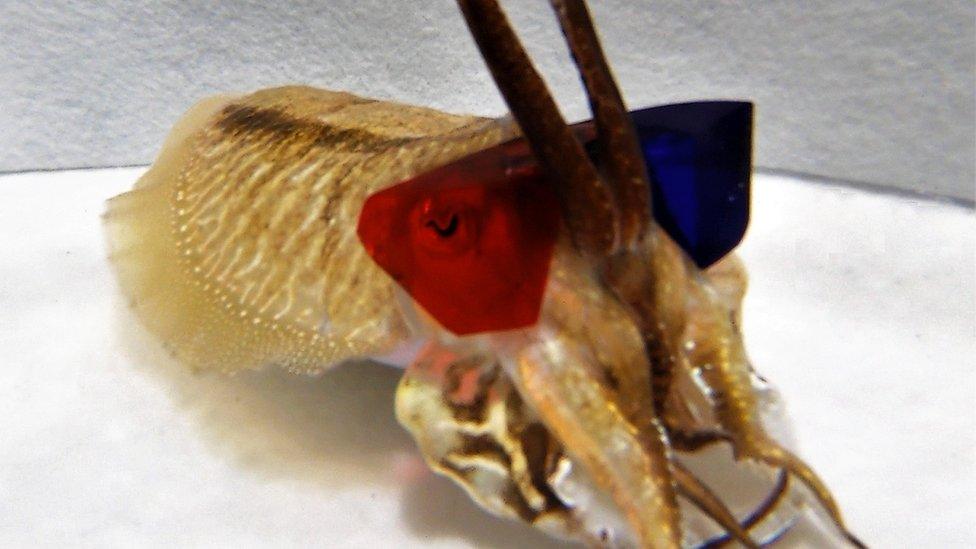Cuttlefish: 3D glasses used to find out how they see
- Published
- comments

The eyes of a cuttlefish are very different to humans, but scientists have discovered we have one spec-tacular thing in common - we both see objects in 3D.
Researchers at the University of Minnesota used Velcro to attach special 3D glasses to cuttlefish (molluscs), to test how their vision worked.
The specs meant they could investigate if the molluscs were using both their eyes to judge distance.
It turns out these amazing creatures may be even better at it than humans!
And they're not the only critters to get new eyewear. Check out these insects in glasses!
How did the test work?
The equipment was arranged so the cuttlefish saw slightly different images with each eye
The scientists built a special underwater theatre before making their molluscs comfortable with the 3D glasses.
They then trained the cuttlefish to strike at images of two walking shrimp - their favourite snack - on screen.
The images were shown either in front of or behind the screen meaning they struck either too close or too far away.
Once they'd done the experiment, the cuttlefish were immediately rewarded with eating a live shrimp.
Professor Trevor Wardill who carried out the test said: "When both eyes could see the shrimp, it allowed cuttlefish to make faster decisions when attacking.
"This can make all the difference in catching a meal."
The cuttlefish were able to take the glasses off if they found them uncomfortable!
What about other cephalopods?
Cuttlefish are members of the cephalopod class, along with octopus and squid.
Previous studies have suggested they are the only cephalopod who can rotate their eyes to face forward.
Their ability to see in 3D is another unique skill for this remarkable creature.
It's not the first time scientists have tested 3D glasses though - check out how smooth these praying mantises look.
- Published10 February 2018
- Published28 November 2019
- Published1 August 2019
